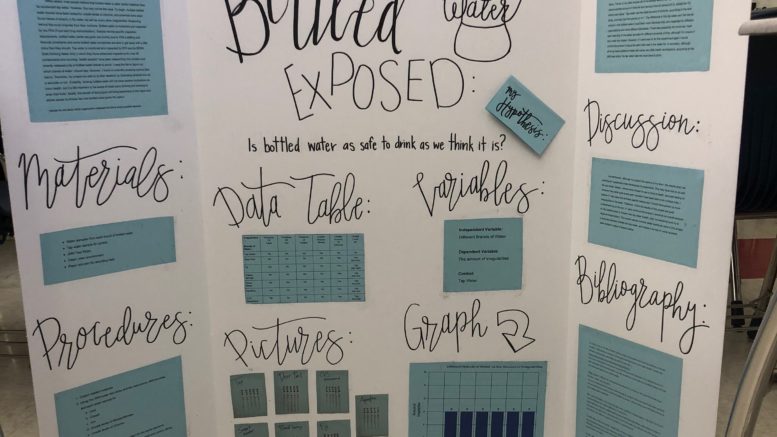Science fair: high school students view it as a synonym for stress, anxiety, and frustration. In theory, science fair serves to educate students about the scientific method, teach them how to write a scientific paper, do research, and present a project.
T.C. Williams science teacher Shawn Lowe said, “The purpose of science fair is to give students a chance to do real science. You shouldn’t have to wait until high school, or wait until college, or even wait until after college to do real science.”
Lowe said that she has been to many national science fairs, and when she asked students there how they came up with their project idea, they responded, “I had to do it. I didn’t think I liked science and then I did this experiment and it turns out I love science.”
“Most kids that really dislike science fair are so set against it that what they choose to do isn’t interesting to them,” said Lowe. “When I see kids who take something that they really enjoy or something they have interest in and run with it, it is amazing to watch how much they enjoy it and how much they learn.”
Junior Marty Christino went to the state science fair last year for her project, called The Development of an Autonomous Robot for Snow Removal. Christino said, “My project was successful last year because I knew my topic area very well and was able to explain it at both a high level and a basic level.”
However, the reaction of most students when hearing the term “science fair” is not wonder and curiosity, but dread.
Science fairs can start as early as elementary school, and they increasingly get more complicated as students progress through school. By high school, students seem to have science fair mastered. For example, many students will Google a topic that they do feel passionate about, do the minimum amount of research, procrastinate and rush through their experiment, and create the presentation board the night before the project is due.
“It is always a second thought,” said sophomore Lily Tucker, “like, ‘Oh man I have to do science fair.’”
In addition, despite that science fair is an extremely hands-on project, it is often overlooked and replaced with increased standardized testing and textbook learning. With less support from teachers and more bookwork, students no longer prioritize science fair and utilize this opportunity to research a topic of interest to them, but instead view it as a burden.
Tucker said she feels like she is “flailing with no direction” as she completes her science fair project.
However, the science fair process was not always like this. The first science fair was held in 1928 at the American Museum of Natural History in New York City, and was focused on educating children about nature and the environment in an ever-urbanizing world. These early projects were primarily dioramas, the first science fair winner made a model of an oak tree split into fourths, each fourth depicting a different season.
In the 1940s, the focus for science fair shifted from educating children to looking for scientifically gifted students, and dioramas soon changed to full blown experiments. These fairs have gotten increasingly more common, complicated, and intense. The most recent winner of the Intel Science Fair built a new kind of aircraft that increased stability while flying.
These fairs still hold value for students who are particularly gifted and interested in science, but for the rest of the students required to participate in the fair, it seems to be little more than a time-consuming project. Sophomore Marley Mainelli said, “I do not see science fair as an opportunity to learn more than I see it as a burden that I have to complete for a grade.”
Students participating in science fair are less focused on exploring science because there is is an increasing lack of support for students struggling to generate a topic, design their research, analyze their data, create their board, and all the steps in between.
A study done by the University of Toronto found that students with less support and resources do consistently worse in science fairs than their counterparts with more mentors and plenty of support.
To improve science fair, schools need to start prioritizing it again. Teachers need to emphasize it in class, and help students along the way. Help them to pick topics they love, design research that will generate data, and interpret the data into meaningful conclusions. Many students expressed that they would be much more interested in science fair if they got more support and time in class to work on it.
Sophomore Savannah Keough said, “I know that it is supposed to be on your own and the teacher is not supposed to help, but maybe a general week to week or every two weeks, ‘this is what you should have done,’ just so you have a way to keep track.”
Sophomore Riley Casagrande said, “If it were slightly more guided, maybe people would understand what they were doing more.”

